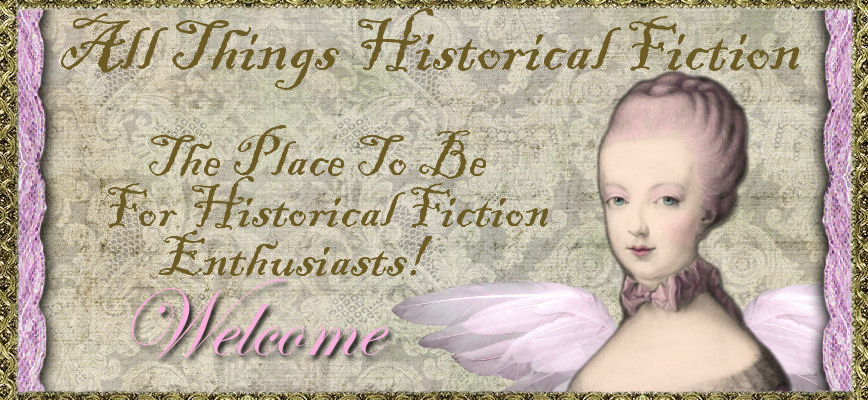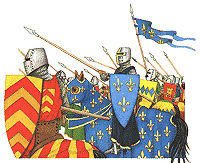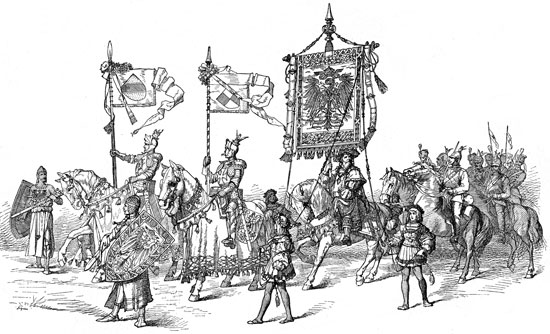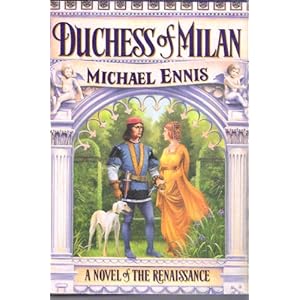So every year the dreaded tax season roll's around and unlike most people I actually really look forward to tax season and here's why! The man who does my entire family's taxes owns his own used book store called Gardner's, which is your usual hole in the wall used book store. So every time you get your taxes done he gives you a 20 dollar gift certificate for his store! It's not the nicest joint in town, but if you can get past the dust and cramped spaces then it's a gold mine when it comes to finding some amazing used books! Today I scored 5 books for only 30 bucks!
I wish you could see how vibrant the book cover is. This photo doesn't do it justice! I found this book in mint condition, which really makes the find more worthwhile!
Publishing date: 1992
Book Synopsis:
In the 1490s, as the ruling families of Italy engage in a deadly rivalry, two charismatic young women seek to control their destinies and, in the process, shape the course of history. Cousins by birth and married, respectively, to the debauched Duke of Milan and his visionary regent, Lodovico Sforza, Isabella of Aragon and Beatrice d'Este are women of great beauty, limitless ambition, and with the sort of amoral cunning necessary simply to survive in the age of Machiavelli.
Michael Ennis's sweeping and unfailingly intelligent novel depicts the struggle of these two women to find love within and outside of marriages that are regarded merely as strategic alliances, and, ultimately, to endure the catastrophic consequences of following their own hearts. The narrative re-creates the courts of Renaissance Milan, Naples, and Venice with breathtaking authenticity: their public magnificence and appalling private scandals; the ceaseless maneuvering of rapacious noblemen and corrupt clergy; the intrigues in which sex and poison are interchangeable weapons. Meticulously researched with a scrupulous regard for accuracy and detail, Duchess of Milan is both a riveting political thriller and a poignant historical romance that reveals how great events are determined by private passions.

I was just about to check out when I saw this book sitting on the shelf and I just had to have it. It's a non-fiction book over the life of Joan of Arc and it has been translated into English.
Publishing Date: 1998
Book Synopsis:
In an exquisite English translation from the bestselling French edition, Joan of Arc: Her Story now appears for American readers. From the French peasant girl who led an army to the icon burned at the stake, Joan has been a blank slate on which thousands have written. Pernoud and Clin clear away the myths so that modern readers can see Joan as she was and include a glossary of important individuals, historical events and interpretations of Joan through the ages. Joan of Arc: Her Story is the thrilling life of a woman who obsesses us even to this day.
This book is probably in the worst condition out of all the books I snatched up, but it wasn't too bad. The cover is just slightly bent and you can tell it's been read one or two times. I had to get this book since it's about Marie Antoinette one of my favorite historical women. I've never heard of the author but I can't wait to dive right in!
Publishing Date: 2003
Book Synopsis:
Paris, 1793, the onset of the Terror. Brave Republican Maurice rescues a mys-terious and beautiful woman from an angry mob and is unknowingly drawn into a secret Royalist plot—a plot revolving around the imprisoned Queen of France, Marie Antoinette, and her enigmatic and fearless champion, the Knight of Maison-Rouge. Full of surprising twists, breakneck adventure, conspiracies, swordplay, romance, and heroism, The Knight of Maison-Rouge is an exhilarating tale of selflessness, love, and honor under the shadow of the guillotine. Dumas here is at the very height of his powers, and with this first and only modern translation, readers can once again ride with the Knight of Maison-Rouge.
This book was highly recommended to me and when I found it I was so happy because I completely forgot about this book until it popped out at me on the shelf.
Publishing Date: 2002
Book Synopsis:
Faber's bawdy, brilliant third novel tells an intricate tale of love and ambition and paints a new portrait of Victorian England and its citizens in prose crackling with insight and bravado. Using the wealthy Rackham clan as a focal point for his sprawling, gorgeous epic, Faber, like Dickens or Hardy, explores an era's secrets and social hypocrisy. William Rackham is a restless, rebellious spirit, mistrustful of convention and the demands of his father's perfume business. While spying on his sickly wife's maid, whom he suspects of thievery, he begins a slow slide into depravity: he meets Sugar, a whore whose penetrating mind and love of books intrigues him as much as her beauty and carnal skills do. Faber (Under the Skin) also weaves in the stories of Agnes, William's delicate, mad and manipulative wife, and Henry, his pious, morally conflicted brother, both of whom seek escape from their private prisons through fantasies and small deceptions. Sin and vice both attract and repel the brothers: William, who becomes obsessed with Sugar, rescues her from her old life, while Henry, paralyzed by his love for Emmeline Fox, a comely widow working to rescue the city's prostitutes, slowly unravels. Faber's central characters, especially the troubled William and the ambitious Sugar, shine with life, and the author is no less gifted in capturing the essence of his many minor characters-the evil madam, Mrs. Castaway, and William's pompous father-in-law, Lord Unwin. The superb plot draws on a wealth of research and briskly moves through the lives of each character-whether major or minor, upstairs or downstairs-gathering force until the fates of all are revealed. A marvelous story of erotic love, sin, familial conflicts and class prejudice, this is a deeply entertaining masterwork that will hold readers captive until the final page.

This was the last book I snatched up. I saw it right after I picked up the Joan of Ark in Her Story novel and it caught my eye due to the golden pages, which gives it an antique look that I love.
Publication Date: 1999
Book Synopsis:
In a series of diary entries, Princess Elizabeth, the eleven-year-old daughter of King Henry VIII, celebrates holidays and birthdays, relives her mother's execution, revels in her studies, and agonizes over her father's health.
I love finding amazing cheap books! If you've read any of this I would love to know what you thought of them. Maybe the will move of on my TBR pile.






















